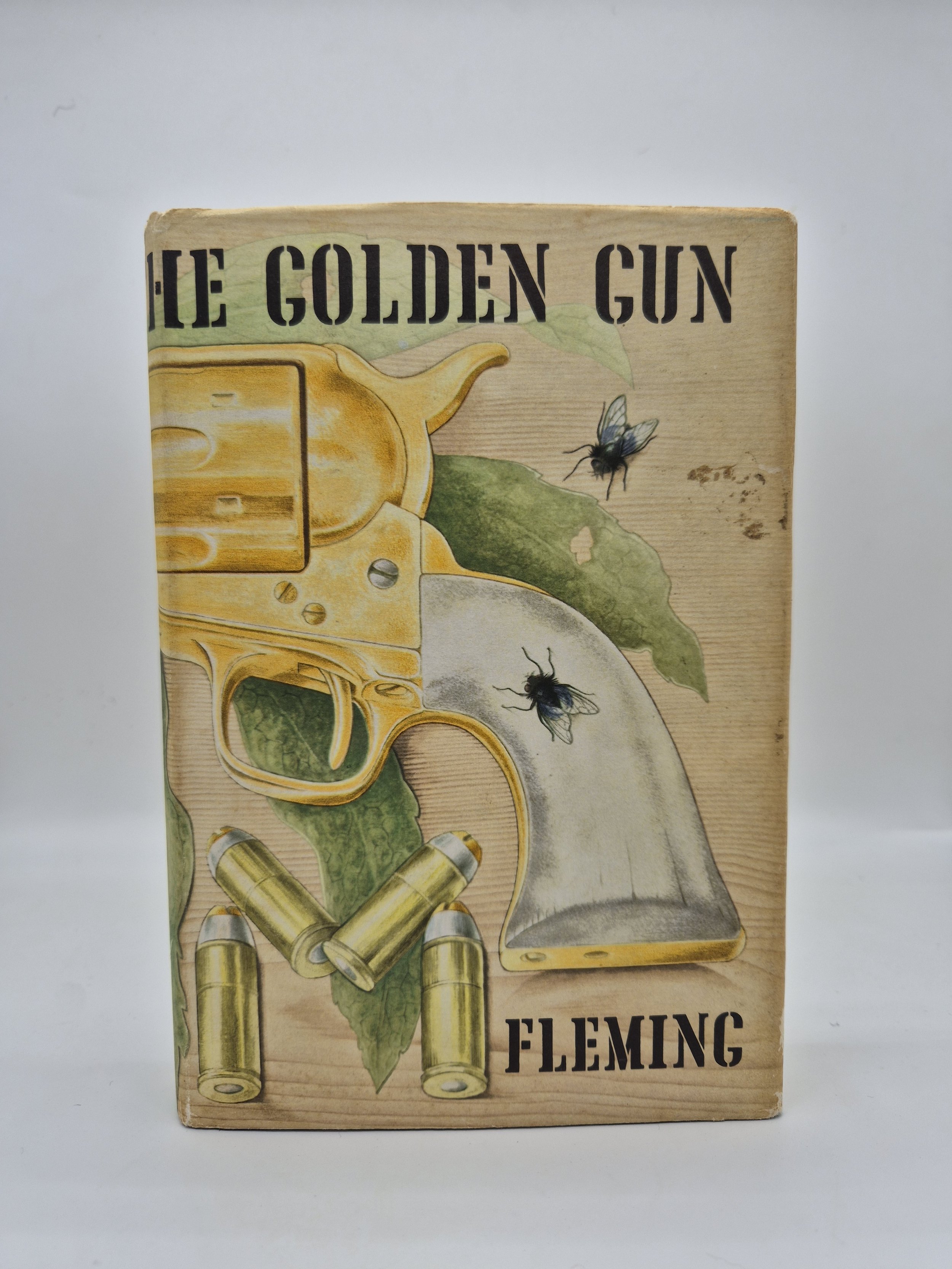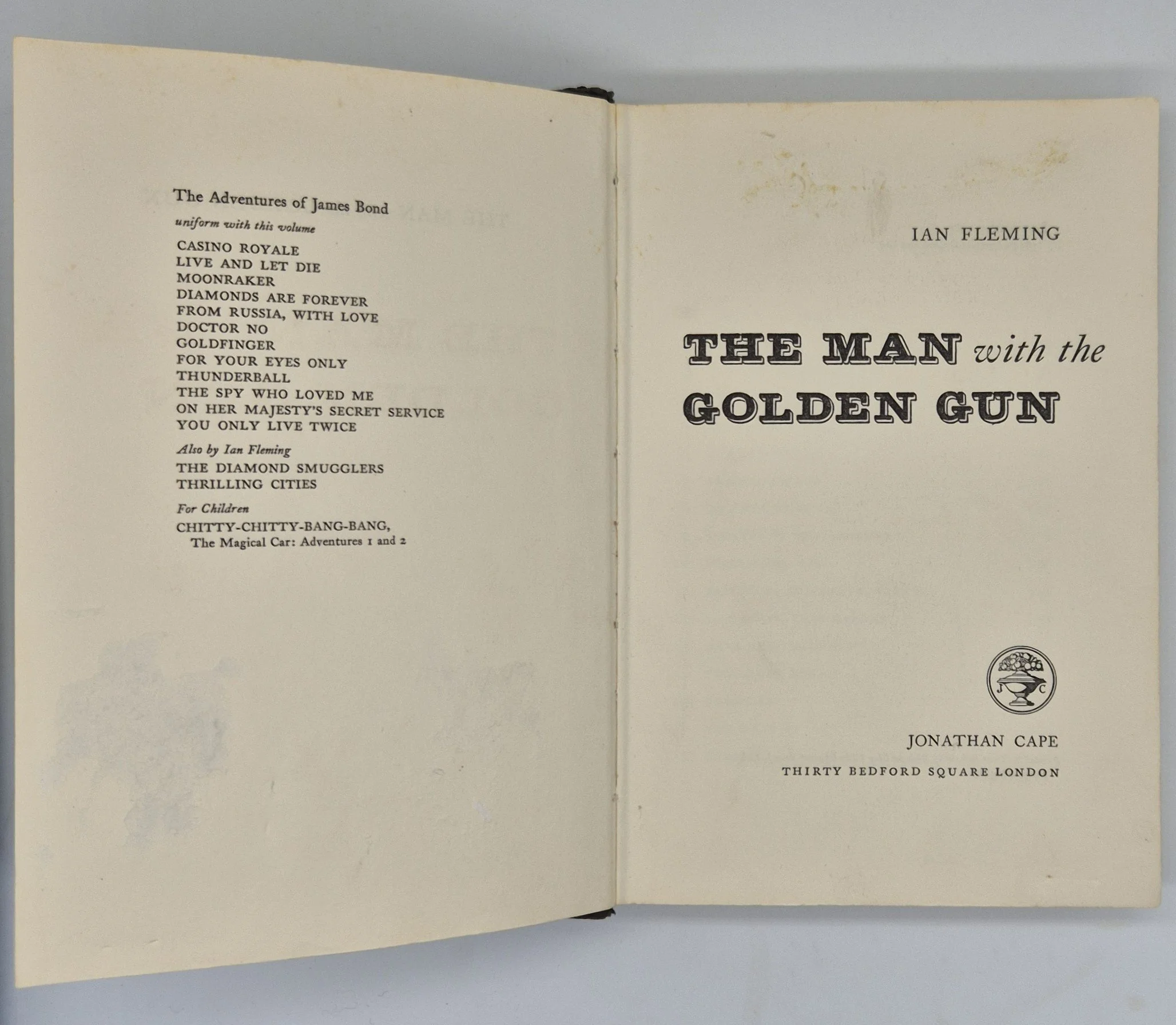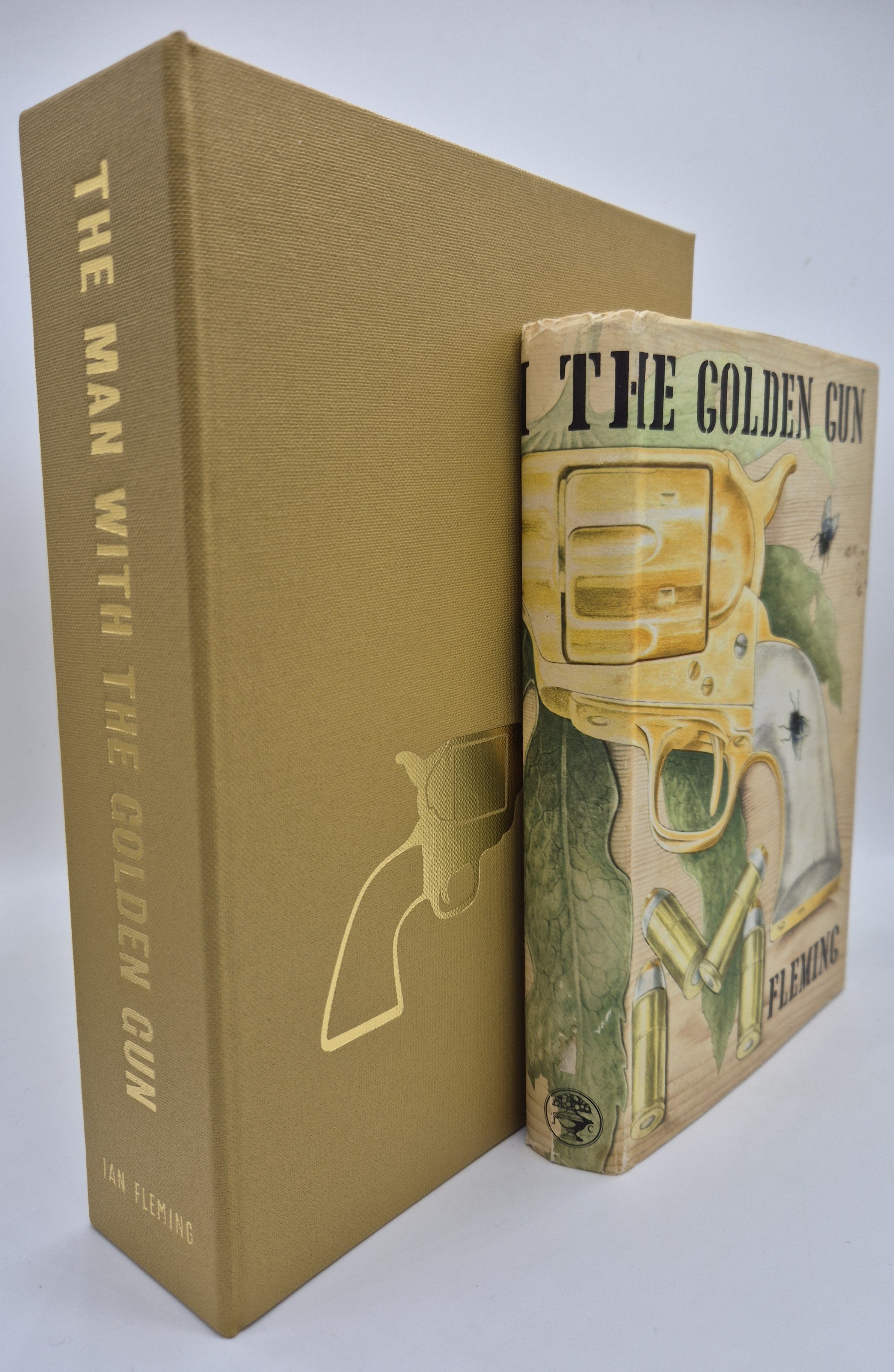




FLEMING, Ian. The Man with the Golden Gun.
London: Jonathan Cape, 1965
8vo., dark brown cloth lettered in gilt to spine with publisher’s device to foot; the front board embossed with the publisher’s ‘golden gun’ device denoting first issue; textured green endpapers; together in the pictorial dustwrapper (unclipped, 18s net to front flap) with the iconic wraparound image by Richard Chopping; pp. [iv], v, [iii], 9-221, [iii]; text block with slight shelf lean; spine cracked at head and foot, sometime expertly repaired at tips with craft paper, and original spine laid down; some light abrasions from erasure on front pastedown and endleaf; bookseller sticker to ffep; library stamps rubbed away at p.11 and 31 with a little surface loss to paper; lightly spotted and marked at edges and prelims; with small brown stain affecting upper edge of final few leaves; a good to very good copy in a very good, unrestored dustwrapper which is a little spotted and browned to the verso; lightly creased and darkened along folds, and some light creases and nicks at edges; one small brown mark, likely offsetting from a sticker, to front panel. Housed in an ochre custom-made clamshell case by Wyvern Bindery, gilt gun device replicated to front; lettered in gilt to spine; two dove-grey velvet protective panels internally.
First edition, first impression, first issue, first state.
It was in 1964 that Ian Fleming began to write his thirteenth and penultimate James Bond novel, while staying at his Goldeneye estate in Jamaica. Featuring the infamous Scaramanga, the plot is set predominantly on the island, and features the usual collection of rogues who plot to sabotage the island’s bauxite trade, sell arms to Castro, smuggle narcotics into America, and set the cane sugar fields ablaze. It is up to the protagonist to sabotage the villain’s plans. Fleming passed away on 12th August 1964, as as such The Man with the Golden Gun appeared posthumously, without the author’s usual second round of edits, to polite and generally good reviews.
The rarest of the Golden Gun issues, one of only 940 copies produced in this binding. After publication, the cost of printing the device proved too great, and subsequent copies were produced with the gun removed.
Gilbert, p. 417-8.
London: Jonathan Cape, 1965
8vo., dark brown cloth lettered in gilt to spine with publisher’s device to foot; the front board embossed with the publisher’s ‘golden gun’ device denoting first issue; textured green endpapers; together in the pictorial dustwrapper (unclipped, 18s net to front flap) with the iconic wraparound image by Richard Chopping; pp. [iv], v, [iii], 9-221, [iii]; text block with slight shelf lean; spine cracked at head and foot, sometime expertly repaired at tips with craft paper, and original spine laid down; some light abrasions from erasure on front pastedown and endleaf; bookseller sticker to ffep; library stamps rubbed away at p.11 and 31 with a little surface loss to paper; lightly spotted and marked at edges and prelims; with small brown stain affecting upper edge of final few leaves; a good to very good copy in a very good, unrestored dustwrapper which is a little spotted and browned to the verso; lightly creased and darkened along folds, and some light creases and nicks at edges; one small brown mark, likely offsetting from a sticker, to front panel. Housed in an ochre custom-made clamshell case by Wyvern Bindery, gilt gun device replicated to front; lettered in gilt to spine; two dove-grey velvet protective panels internally.
First edition, first impression, first issue, first state.
It was in 1964 that Ian Fleming began to write his thirteenth and penultimate James Bond novel, while staying at his Goldeneye estate in Jamaica. Featuring the infamous Scaramanga, the plot is set predominantly on the island, and features the usual collection of rogues who plot to sabotage the island’s bauxite trade, sell arms to Castro, smuggle narcotics into America, and set the cane sugar fields ablaze. It is up to the protagonist to sabotage the villain’s plans. Fleming passed away on 12th August 1964, as as such The Man with the Golden Gun appeared posthumously, without the author’s usual second round of edits, to polite and generally good reviews.
The rarest of the Golden Gun issues, one of only 940 copies produced in this binding. After publication, the cost of printing the device proved too great, and subsequent copies were produced with the gun removed.
Gilbert, p. 417-8.
